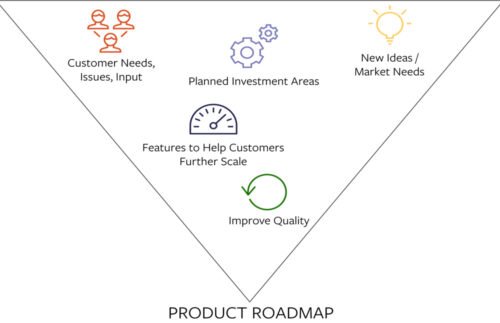Inside Arena: Virtual Product Development
 Developing a product of any kind requires planning, collaboration, and execution. To better understand product development at Arena, I interviewed members of the product management and engineering teams to understand how Arena structures product work across a dispersed organization.
Developing a product of any kind requires planning, collaboration, and execution. To better understand product development at Arena, I interviewed members of the product management and engineering teams to understand how Arena structures product work across a dispersed organization.
Together, Luca Pasquesi, Senior Product Manager; Alisa Leonovich, Senior Manager of Validation & Compliance; Antony John, Senior Director of Product Management; Zhongwei Li, Vice President of Engineering; Philippe Tang Kwan Hoi, General Manager at Arena Suzhou; and Meiping Ding, Senior Developer Manager at Arena Suzhou have more than 60 years of relevant experience. During our conversations, they attributed Arena’s success in product development to four factors: adaptation, collaboration, community, and transparency.
The Ability to Adapt
Adaptation was a common theme in the conversations I had with the product team.
Adapting methodologies
When I asked the team what product development methodologies Arena uses, everyone talked about how they aren’t set on one “right way”. They shared how they have adapted different methodologies to meet technology advances and customer needs. For example, validation and compliance require different methodologies.
“We started with something very standard: the waterfall model. Three years ago, we introduced the agile process, but found it didn’t work at every level the way we wanted to work. So, we divide the product release into smaller projects that are feature-based, and these teams work using an iterative agile process.” – Zhongwei Li, VP of Engineering
Because Arena provides a validation maintenance package for FDA-regulated companies, Arena’s product team must communicate—in advance—the scope and impact of each release. This helps Arena provide a simple path for customers to stay validated with our software during updates. As Luca noted, “Because we provide that validation maintenance package to our life sciences customers, product management stays close to customers in communication and considers validation impact from the beginning of work on each release.”
Adapting to overcome unanticipated challenges
Arena’s product teams are dispersed across several geographies including the Bay Area and Suzhou, China, and with Bay Area commutes bordering on impossible some days, the team has long practiced flexible work hours and work from home days. But the move to an all-remote workforce due to COVID-19 was new for everyone. Meiping and Philippe shared their experiences of working from home in Suzhou when the Chinese government asked citizens to stay home months before their colleagues in the United States. Tapping into the Bay Area team’s work flexibility, Meiping noted it was easier for him to schedule meetings with his U.S. counterparts later in their day. This practice of passing critical issues seamlessly across teams provided the “follow the sun” benefit of dispersed teams.
Alisa observed that—although Arena already had employees and teams spread around the world and many tools in place for remote collaboration—moving to 100% remote work was an adjustment for everyone. As COVID-19 began to impact the U.S., she said it shed light on how many quick decisions and conversations that happen organically when co-located are often difficult to replicate. “We had to adjust our previous cadence of work. We have more frequent calls and meetings to ensure everyone is on the same page,” she noted. With a willingness to adapt and see the best, Alisa added that “in many ways, our overall communication has greatly improved—it seems like everyone is now responding to emails with a little extra promptness!”
From the agility to adopt new product development methodologies or to reshape work practices to accommodate other team members’ schedules and constraints, the product team sees flexibility as key.
A Culture of Collaboration
 Arena is built on a culture of collaboration. For the product team, this means new product innovation and new product development isn’t limited to one team. As Luca observed, “At Arena, everybody not only wants to do their own job, they want to contribute to the greater vision that we all share.” With this in mind, Arena holds a regular Product Council meeting, and anyone can attend and provide input into the product direction.
Arena is built on a culture of collaboration. For the product team, this means new product innovation and new product development isn’t limited to one team. As Luca observed, “At Arena, everybody not only wants to do their own job, they want to contribute to the greater vision that we all share.” With this in mind, Arena holds a regular Product Council meeting, and anyone can attend and provide input into the product direction.
“We use Arena for our own development among other tools for collaboration. Our culture around our team dynamic is conducive to collaboration and helping one another. As product managers, we’re responsible for different things, but we do a good job of asking for help. We meet frequently and discuss challenges. It helps to get clarity and a fresh set of eyes.” – Luca Pasquesi, Senior Product Manager
Luca also voiced his appreciation for the development team, saying, “We have a really special team of developers. Our engineering team has so much domain expertise. They understand use cases, and they know when to suggest a different strategy.”
Using cloud-based tools for collaboration
Even before COVID-19, as Alisa noted above, Arena relied on cloud-based tools for collaboration in the product development process. Philippe and Meiping shared how teams in Suzhou and the Bay Area both use JIRA, Confluence, and the Arena platform to share requirements, record decisions made during meetings, track issues, and manage quality processes and training.
But it’s not only the kinds of cloud-based tools Arena uses for collaboration; it’s also how these tools are used. Zhongwei explained how his team uses tools for collaboration to enable technological democracy: “We don’t make decisions top-down. We did that when we had a smaller team, but with a larger and dispersed team, we try to bring technological democracy and empower our teams.”
A Dedication to Community
Arena is dedicated to building a sense of community at work. When I asked Philippe if there was anything else I should know about his team, he said, “I want to make people feel like family at the Suzhou office.” Meiping elaborated about how this works: “We assign a buddy to each new hire so that people can ask questions.”
“It may sound a little cheesy, but Arena is like a family. We are incredibly lucky to have a team made up of many people who have been with us for years. Some have even left the company to come back later. This means that our employees have a rich bank of knowledge and strong relationships with many of our customers.” – Alisa Leonovich, Senior Manager of Validation & Compliance
With the new #WFH structure for the entire team, Arena’s product team talks about what everyone needs to still feel like a part of the family. One thing the team decided on: using video during team calls. In the past, the norm was to use audio only for those few working remote. Now, with the realization that people benefit from a level of connection beyond audio, the product team has shifted to video calls. Additionally, during regular product working sessions, team leaders dedicate the first 10 minutes of each call to checking in, asking questions about life outside of work. Sometimes, team members show off their pets or kids’ art projects.
A Commitment to Transparency
Arena values transparency from start to finish—how decisions are made, what decisions are made, and the results of the work done. As Philippe remarked, “We are very direct. We want to get things done and solve problems.”
“We have some development processes that we need to complete for each release, and it’s transparent to everyone. We know for each stage what we need to do.” – Meiping Ding, Senior Developer Manager
Roadmaps, timelines, release progress, decisions—everything is documented and anyone in the company can access the information. There is no black box.
How You Can Be a Part of Product Development at Arena
 Customer input comes through many paths, including individual user level through the Support team and FastFeedback process. Then, at the company level, the Customer Success team captures high priority use cases, needs, and enhancement requests through Customer Coaching or business review sessions. Arena also conducts new use case discussions with customers to understand business processes needs in detail and help prioritize what is of most value to the most customers during the new product development process. Finally, the product management team conducts customer research while working on key initiatives and investments into specific areas of their product and platform.
Customer input comes through many paths, including individual user level through the Support team and FastFeedback process. Then, at the company level, the Customer Success team captures high priority use cases, needs, and enhancement requests through Customer Coaching or business review sessions. Arena also conducts new use case discussions with customers to understand business processes needs in detail and help prioritize what is of most value to the most customers during the new product development process. Finally, the product management team conducts customer research while working on key initiatives and investments into specific areas of their product and platform.
“All of this customer input is considered across future investment areas and alongside our market research about where our customers are going with technology, product development advancements, and regulatory or compliance needs.” – Antony John, Senior Director of Product Management
Arena wants to hear from customers. Your input helps determine what to do next with product development resources. Arena’s product roadmap is informed by three primary pillars—future investment areas, customer input, and market research—and Arena looks at future investment areas in three categories: core functionality, platform, and people.
Adaption, collaboration, community, and transparency have helped Arena’s product team to remain resilient even during difficult times. Many thanks to Luca, Alisa, Antony, Zhongwei, Philippe, and Meiping for sharing their time and expertise!


